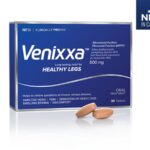Not for men only
Stroke is thought by most people to be a disease of older men. However, almost 60% of the 50,000 stokes that occur in Canada each year affect women, and not just older women. A new study published in June of this year shows that middle aged women between the age of 45 – 54 are more than twice as likely as men their age to have stokes. Women are also more likely to die from a stroke than are men. There is huge public awareness of breast cancer in women, however, twice as many women die of stroke than die of breast cancer.
The risk factors for stroke are similar in men and women, however, there are some additional risk factors unique to women. In addition, a stroke may present differently in women and the diagnosis of stroke can be delayed, resulting in more severe impairment and death. It is vital to get awareness out to the general public that stroke is common in women and that it may present with atypical symptoms. Stroke is a medical emergency and anytime one even suspects this has occurred, emergency assessment and treatment should be sought.
What is a stroke?
A stroke occurs when an area of the brain does not receive blood supply. If the brain cells do not receive the oxygen and nutrients they need, they can die within minutes.
The most common type of stroke is an ischemic stroke, where a piece of a blood clot or a fatty deposit from an atherosclerotic plaque breaks off and travels in the blood stream to lodge an a smaller artery supplying an area of the brain, compromising blood supply to that area of the brain. Atherosclerotic plaques cause blood clots by slowing the flow of blood through blood vessels. Blood that travels very slowly is more likely to clot. Also, atherosclerotic plaques can rupture, which can also release blood clots that are then free to travel in the blood stream.
Less commonly, a blood clot can come from the heart, usually in people with heart defects or an abnormal heart rhythm.
Hemorrhagic strokes are less common than ischemic strokes, and occur when a blood vessel in the brain ruptures. This can occur in blood vessels made weaker by high blood pressure or aneurysms, which are thin weak spots in an artery that balloon out and can eventually burst.
Some people use the term “mini-stroke” for symptoms of a stroke that only last for a few minutes up to a day. These are called transient ischemic attacks (TIA’s), and although the abnormal symptoms clear up completely, it is a sign that a full stroke may occur at any time. Anyone experiencing a TIA should be evaluated in a hospital emergency setting.
What are the Symptoms of Stoke?
Strokes develop suddenly and most people will have two or more signs, the most common of which are:
- Sudden numbness or weakness of the face, arm or leg, mainly on one side of the body
- Sudden trouble seeing in one or both eyes
- Sudden trouble walking, dizziness, or losing balance
- Sudden confusion or trouble talking or understanding speech
- Sudden bad headache with no known cause
While most women will exhibit some of these signs, they can also have more unusual symptoms such as:
- Sudden face and arm or leg pain
- Sudden hiccups
- Sudden nausea
- Sudden chest pain
- Sudden shortness of breath
- Sudden pounding or racing hearbeat
What are the Risk Factors for Stroke?
Aside from having a family history of stroke and age, most of the risk factors of stroke that are common to men and women are modifiable. These risk factors include high blood pressure, high cholesterol, smoking, diabetes, being overweight, and lack of exercise.
Women have some additional risk factors including use of birth control pills or hormone replacement for menopausal symptoms, during pregnancy and child delivery, and being a migraine sufferer, especially if migraines are preceded by an aura. Recent studies have shown that post menopausal women with a waist size over 35.2 inches and a triglyceride level over 128 mg/dL have a five fold increased risk of stroke.
How do we Prevent or Reduce the Risk for Stroke?
Experts believe that 80% of strokes are preventable. As with so many other diseases, prevention involves healthy living. Important factors are:
- Control high blood pressure with lifestyle modification and medication if necessary
- Lower your cholesterol and triglyceride level through diet and medication if necessary
- Don’t smoke
- Good diabetic control
- Maintain a healthy weight
- Exercise at least 30 minutes a day most days of the week
- Limit alcohol to no more than one drink a day
- Find healthy ways to cope with stress
Does Taking Aspirin Reduce the Risk of Stroke?
Many studies in the past have supported the long term use of low dose aspirin in preventing heart attacks and stokes in people who have already had a cardiovascular event or are at high risk.
Newer studies using long term low dose aspirin in healthy women with low risk of heart disease and stroke have received mixed reviews. While some studies have shown a reduction in stroke incidence and even death from cancer with regular use of low dose aspirin, the general consensus at this time is that aspirin use in healthy women is not beneficial. Aspirin can be associated with some potentially dangerous side effects such as peptic ulcer disease and gastrointestinal bleeding.
If you are considering taking aspirin regularly, it is best to consult with your family doctor first, taking into account your risk factors.
How is Stroke Treated?
For those people suffering from ischemic stroke, a clot dissolving medication, tPA can be administered to restore blood circulation to the blocked area of the brain. However, it is most effective if given within 3 hours of the stroke. This is why early recognition and prompt treatment is so important. This medication cannot be given to people suffering from hemorrhagic stroke, so an emergency CT scan or MRI needs to be done prior to administering the medication.
Surgery may also be used in the emergency treatment of stroke, or to prevent stroke.























